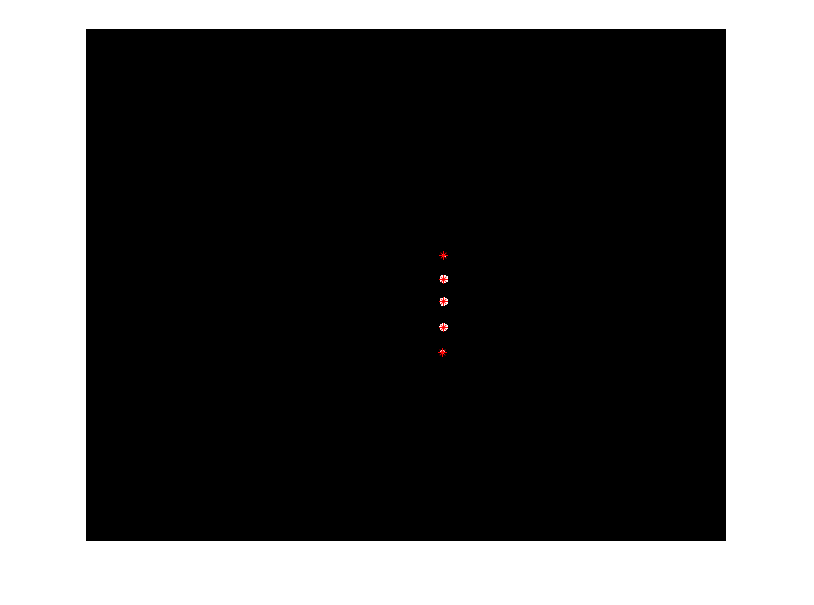I have an image composed of small white dots that should stay on the same line.
I wanted to recognize this line using the Hough Transform. To do that I binarized the image, calculated the centroid of each dot and therefore I got an image that is all black except a few white pixels in the position of the centroids of the original dots.
Then I applied the hough transform algorithm (already implemented in Matlab), but it looks not capable to fully detect this line. In particular it skips the last dot in the bottom.
Do you know why this is happening? I would like to understand why the hough trasform method is not working properly and if there is any kind of improvement I can apply.
Here is my Matlab code:
BW = imbinarize(data,0.04);
s = regionprops(BW,'centroid');
centroids = cat(1, s.Centroid);
imshow(BW)
hold on
plot(centroids(:,1),centroids(:,2), 'r*')
BW(:,:)=0;
for k=1:size(centroids,1)
BW(round(centroids(k,2)),round(centroids(k,1)))=1;
end
[H,T,R] = hough(BW,'RhoResolution',0.1,'Theta',-90:1:89.9);
P = houghpeaks(H,5,'Theta',T,'threshold',ceil(0.3*max(H(:))));
lines = houghlines(BW,T,R,P,'FillGap',10000,'MinLength',1);
figure, imshow(BW), hold on
max_len = 0;
for k = 1:length(lines)
xy = [lines(k).point1; lines(k).point2];
plot(xy(:,1),xy(:,2),'LineWidth',2,'Color','green');
plot(xy(1,1),xy(1,2),'x','LineWidth',2,'Color','yellow');
plot(xy(2,1),xy(2,2),'x','LineWidth',2,'Color','red');
len = norm(lines(k).point1 - lines(k).point2);
if ( len > max_len)
max_len = len;
xy_long = xy;
end
end
plot(xy_long(:,1),xy_long(:,2),'LineWidth',2,'Color','cyan');



